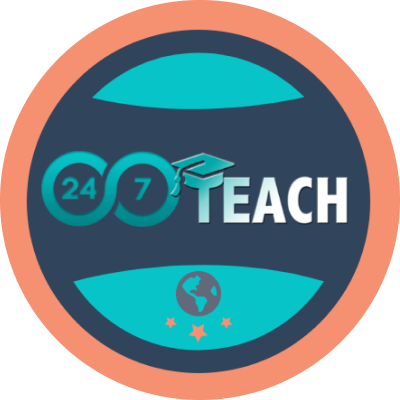Introduction to Leadership - Lesson 1: Understanding Leadership
Prefer to listen? Click here:
Workshop Scenario
Please think of yourself in the following scenario:
You are a student or young professional who is passionate about making a difference in your community. You have a strong desire to lead and make an impact, but you're not sure where to start. You've noticed that many of the leaders in your community are not very effective, and you don't want to make the same mistakes.
Learning about leadership can provide you with the knowledge, skills, and inspiration you need to positively impact your community. Whether you want to grow personally, advance your career, or make a difference in the world, learning about leadership can help you achieve your goals.
In this lesson, you will learn how to Identify and analyze effective leadership characteristics, evaluate personal leadership qualities and strengths, and develop and implement a personalized leadership style.
At the end of the workshop, you will submit a plan for leadership as your final project. You will work on this plan throughout the workshop, and add to it at the end of every lesson.
Throughout this lesson, you will develop a goal for which you wish to someday be a leader. Think about the leadership characteristics you already possess for this goal, those you’ll need to improve upon, and a leadership style that most fits your personality.
Lesson Objectives:
By the end of this lesson, you will be able to:
Identify and analyze the characteristics of effective leadership
Evaluate personal leadership qualities and strengths
Develop and implement a personalized leadership style
Before we dive into the topic, let’s start by asking ourselves a few questions:
What does leadership mean to you?
Who are some leaders you admire and why?
What do you think are the most important qualities for a leader to have?
Take a moment to reflect on these questions and jot down your answers. As we go through the lesson, you will have the opportunity to reflect on and further develop your own thoughts and understanding of leadership.
Pre-Assessment:
Please complete a short assessment of your current knowledge of Leadership Skills.
Lesson 1: Understanding Leadership
Leadership is a critical skill that can help individuals succeed in all aspects of life. A leader is someone who influences and motivates others to work towards a common goal, and effective leadership can make a significant impact on the success and outcome of any endeavor. Leadership is a mindset, responsibility, and skill.
In this learner-centric lesson, we will explore what makes a great leader, the characteristics that define a great leader, and how to find your own unique leadership style
Characteristics of a Great Leader:
Vision: A great leader has a clear and inspiring idea of what they want to achieve. They communicate this vision to others and work tirelessly to make it a reality. They don’t always know everything, but they need to know the why behind things.
Empathy: A good leader understands the perspectives and emotions of others and uses this understanding to guide their actions. They are able to put themselves in other people’s shoes and make decisions that take into account the impact that those decisions will have on others.
Confidence: Confidence is an essential quality of a great leader. Leaders who have confidence in themselves and their abilities inspire others to believe in themselves as well. Confidence also helps leaders make decisions and take risks when necessary. A leader takes responsibility for the outcome of their decisions. They’re not just someone with all of the answers. They can take feedback and suggestions from others. In fact, to be a great leader, you must also be a great follower.
Decisiveness: Good leaders are able to make difficult decisions quickly and effectively, without being indecisive or wavering. They are able to weigh the options, consider the consequences, and act with purpose. Again, they are able to take responsibility for their decisions.
Adaptability: In an ever-changing world, leaders who can adapt to new circumstances and pivot their strategies as needed are more likely to succeed. Great leaders are able to recognize when change is necessary and they are able to make the necessary adjustments to ensure their vision is achieved. They are also able to take responsibility for things they are not responsible for sometimes.
Communication skills: Effective leaders are excellent communicators and are able to articulate their vision, ideas, and decisions in a clear and compelling manner. They are able to convey complex ideas in simple, easy-to-understand terms, and they are able to inspire others to work towards a common goal.
Passion: Great leaders are passionate about what they do and they inspire others to share their enthusiasm. They are driven by their beliefs and values, and they are motivated by a desire to make a positive impact in the world.
Take a moment to reflect on these characteristics. Which of these qualities do you possess? Which ones would you like to develop further?
It is important to remember that there is no one-size-fits-all approach to leadership. Different leaders will have different strengths and weaknesses, and different styles will be effective in different situations. You get in life not what you want but who you are.
Different Styles of Leadership
Leaders can adopt a variety of different leadership styles, depending on the situation, the people they are leading, and their own personalities and strengths. Some of the most common styles of leadership include:
Autocratic Leadership: This style of leadership involves a top-down approach, where the leader makes all the decisions and tells others what to do. This style is often used in emergency situations or when quick decisions are required.
Transformational Leadership: This style of leadership focuses on inspiring and motivating others to reach their full potential. Transformational leaders create a vision, set clear goals, and empower their followers to take ownership of the vision and work together to achieve it.
Servant Leadership: This style of leadership involves putting the needs of others first and serving them in order to achieve a common goal. Servant leaders understand that leadership is about empowering others and making a positive impact on their lives.
Laissez-Faire Leadership: This style of leadership involves delegating authority and responsibilities to others and giving them the freedom to make their own decisions. Laissez-faire leaders provide guidance and support, but ultimately trust their followers to take the lead.
How Leaders Develop Vision
To develop a vision, leaders can use a structured approach called a CPR (Context, Purpose, Results) framework. Here's how they can write a CPR to develop their vision:
Context: Start by clarifying the context in which the vision will operate. This includes understanding the organization's current situation, its history, values, culture, and external environment. This step will help leaders to identify any external factors that could impact the organization's success in the future.
Purpose: Define the organization's purpose and mission. This step will help leaders to determine the core values and principles that guide the organization. It's important to ensure that the vision is aligned with the organization's purpose and mission.
Results: Identify the key results that the organization wants to achieve in the long term. This step will help leaders to define the specific outcomes they want to see as a result of the vision. These results should be specific, measurable, achievable, relevant, and time-bound (SMART). It's important to ensure that the vision is challenging but realistic.
Once the CPR framework has been completed, leaders can combine the three elements to develop a clear and inspiring vision statement. This vision statement should communicate the organization's purpose, values, and long-term goals in a way that motivates and engages stakeholders. It's important to ensure that the vision statement is communicated consistently across the organization and that it remains relevant and responsive to changes in the external environment.
Finding Your Own Leadership Style
It is important to understand that leadership is not just about having a specific style, but rather it is about finding a style that works best for you and the people you are leading. To find your own leadership style, consider the following steps:
Reflect on your strengths and weaknesses: Take some time to reflect on your strengths and weaknesses and think about how these qualities impact your leadership style. Are you a good communicator? Are you comfortable taking risks? Do you have a strong sense of empathy?
Observe others: Pay attention to the leadership styles of others, whether it be your boss, a teacher, or a mentor. Try to understand what works well for them and what doesn't.
Experiment: Don't be afraid to try out different leadership styles and see what works best for you. This could involve taking on new responsibilities at work, volunteering for a leadership role in a club or organization, or practicing your leadership skills in a supportive environment.
Seek feedback: Ask for feedback from others, whether it be your colleagues, friends, or family. Listen to their observations and reflections on your leadership style and use this information to make improvements and adjustments.
Closing Assessment
It’s time to work on your leadership plan. Please open up the document, make a copy with your name in the title, and answer questions 1-3.
Advance your understanding by participating in the 24/7 Discussion Forum:
1. Please answer two of the following questions in the comment section below and interact with learners worldwide.
Which quality do you think is most important for a leader to possess and why?
Which leadership style do you gravitate towards and why?
What steps can you take to improve your leadership skills?
2. Please read and reply to other learners’ answers in the forum. Provide feedback, thoughts, or questions. Your replies should offer new substantiated ideas or provoke thoughtful discussion.
Course created by Samantha Nally and Rob Grillot












